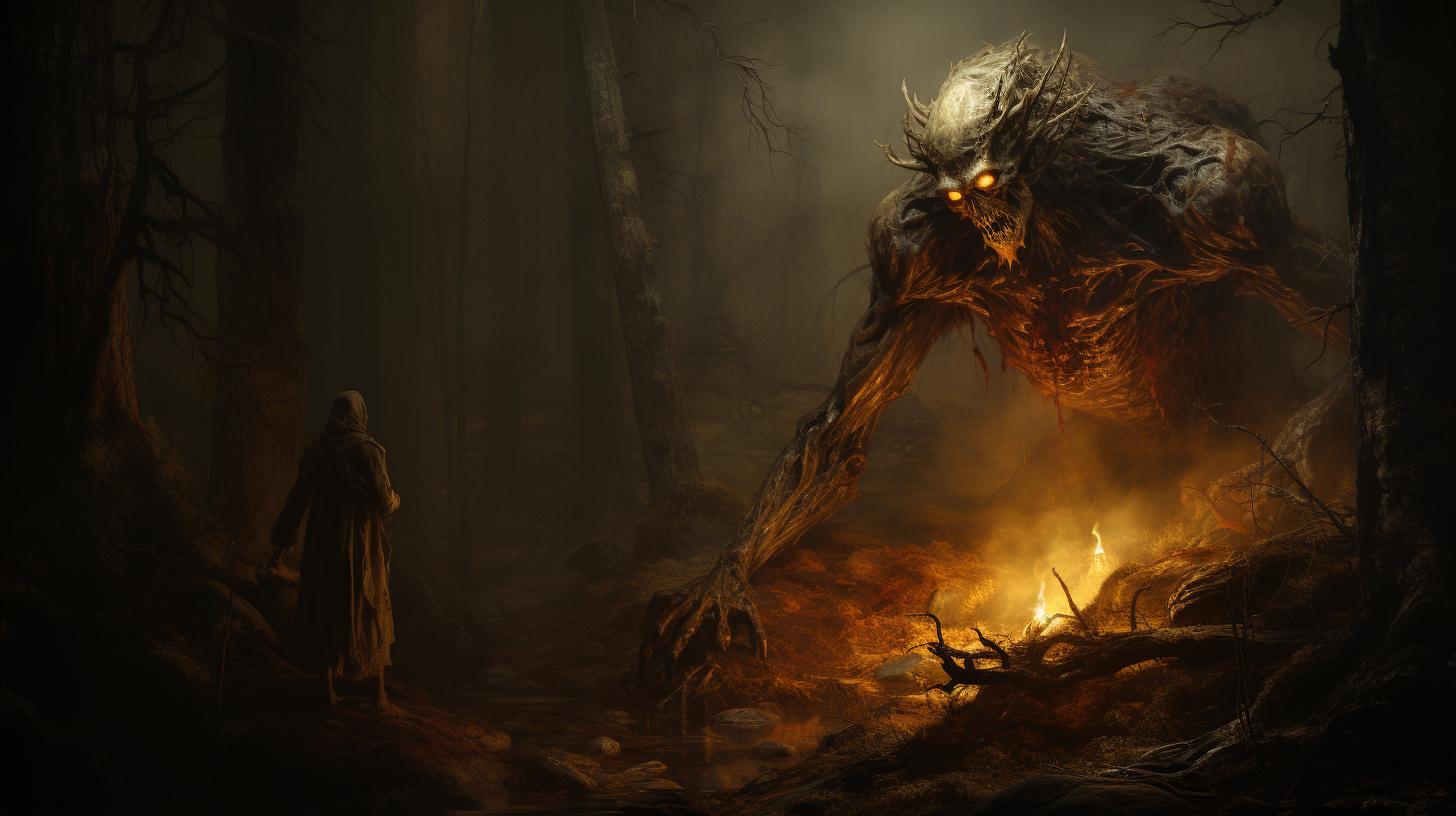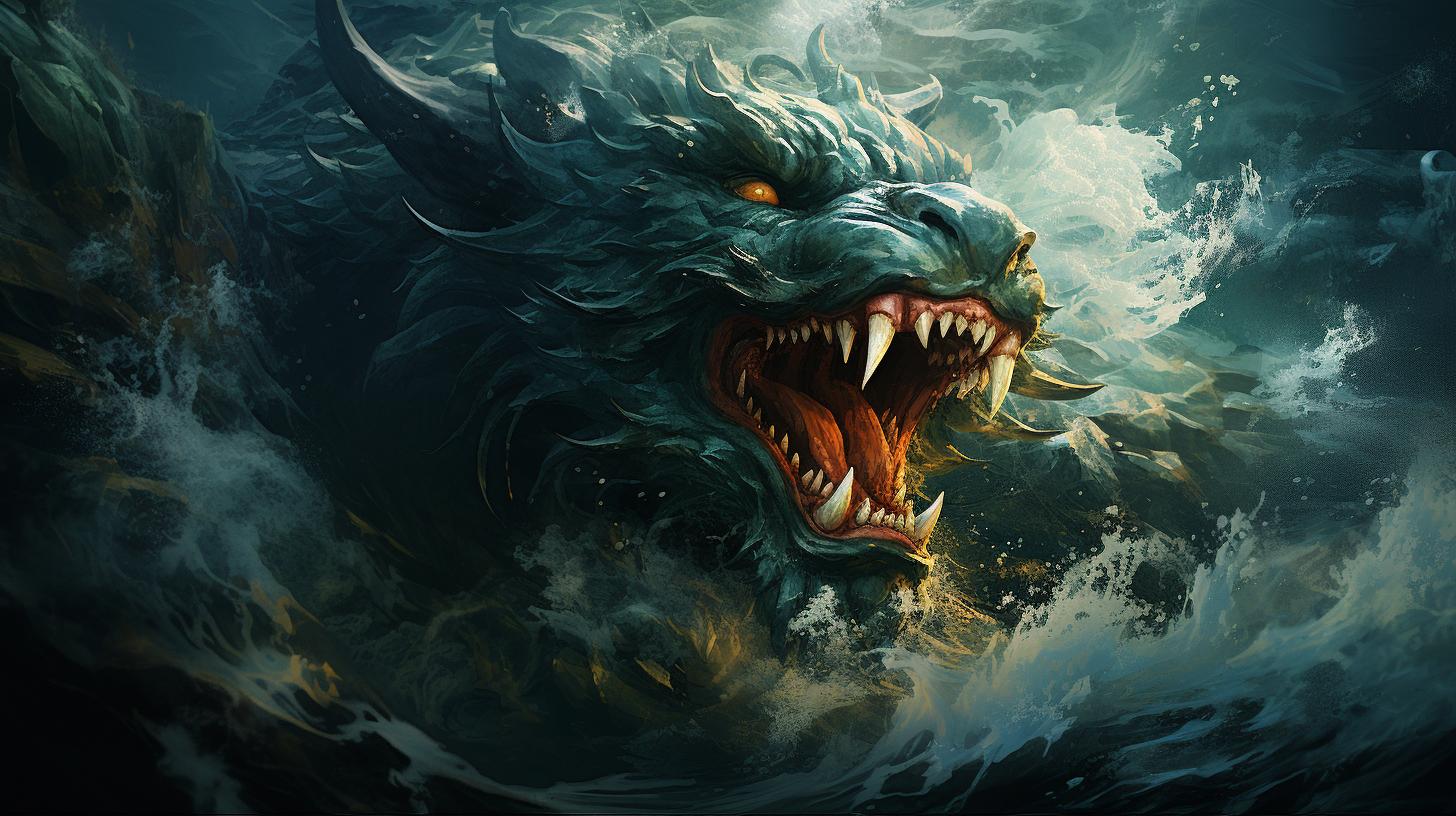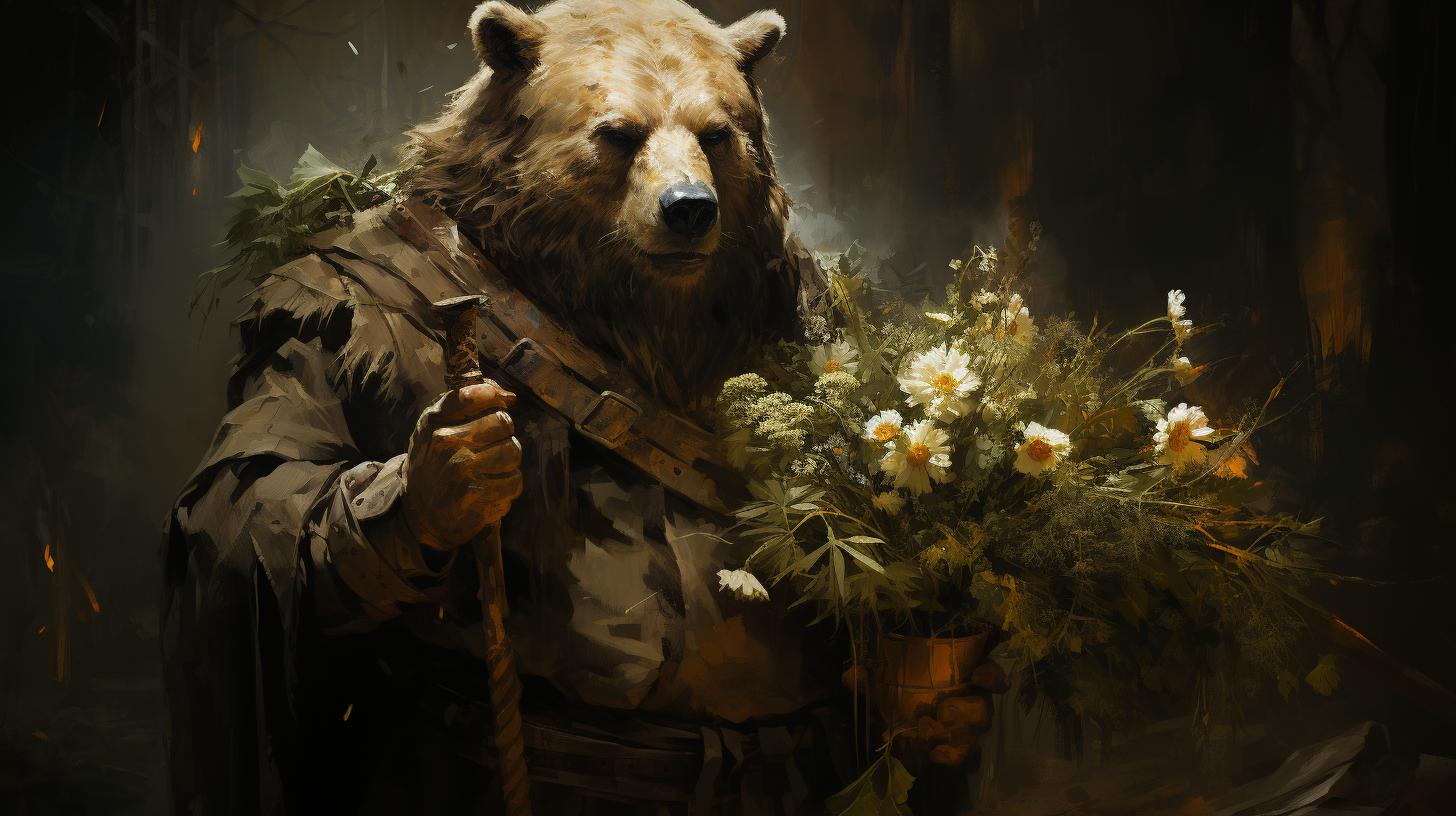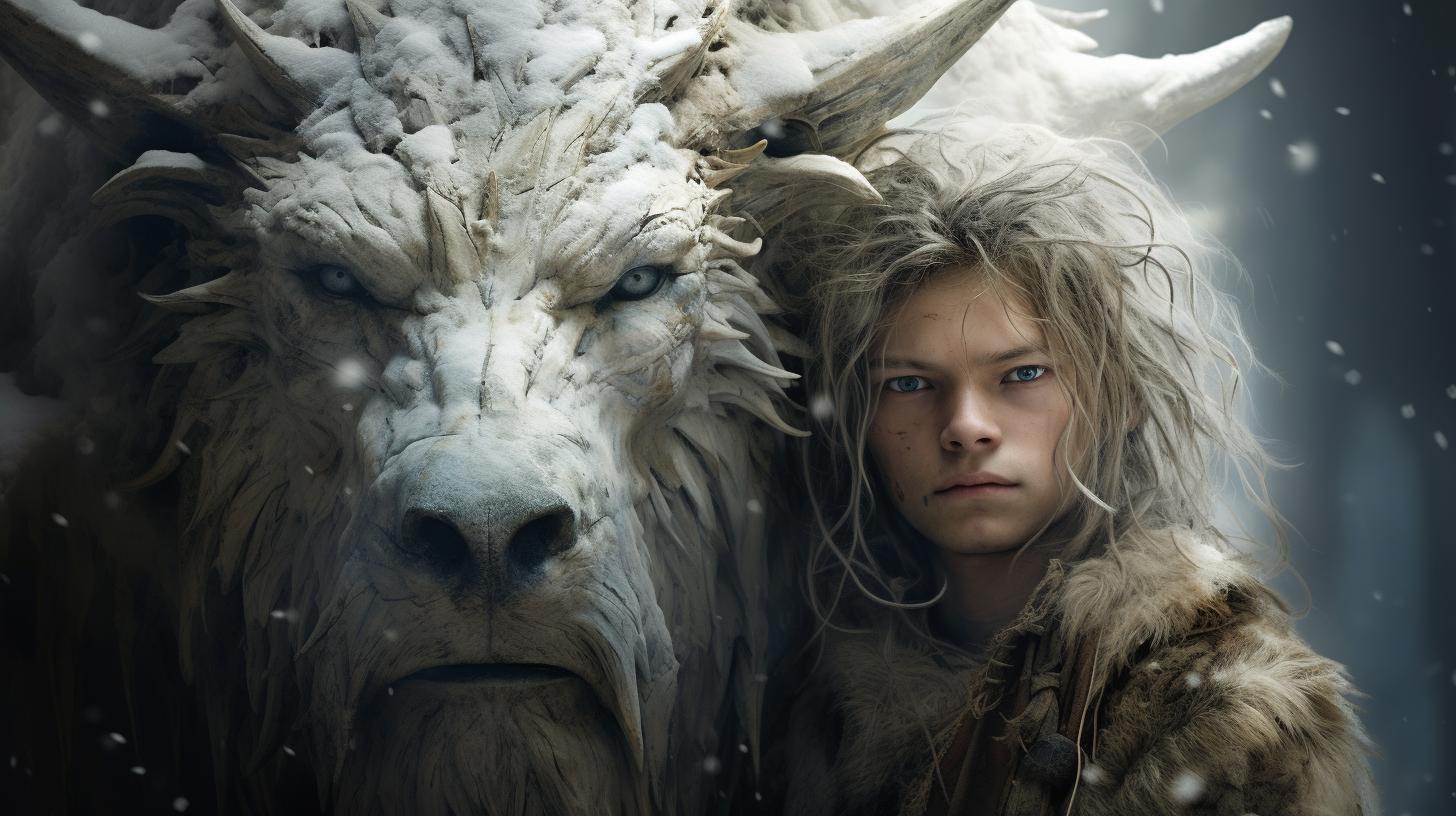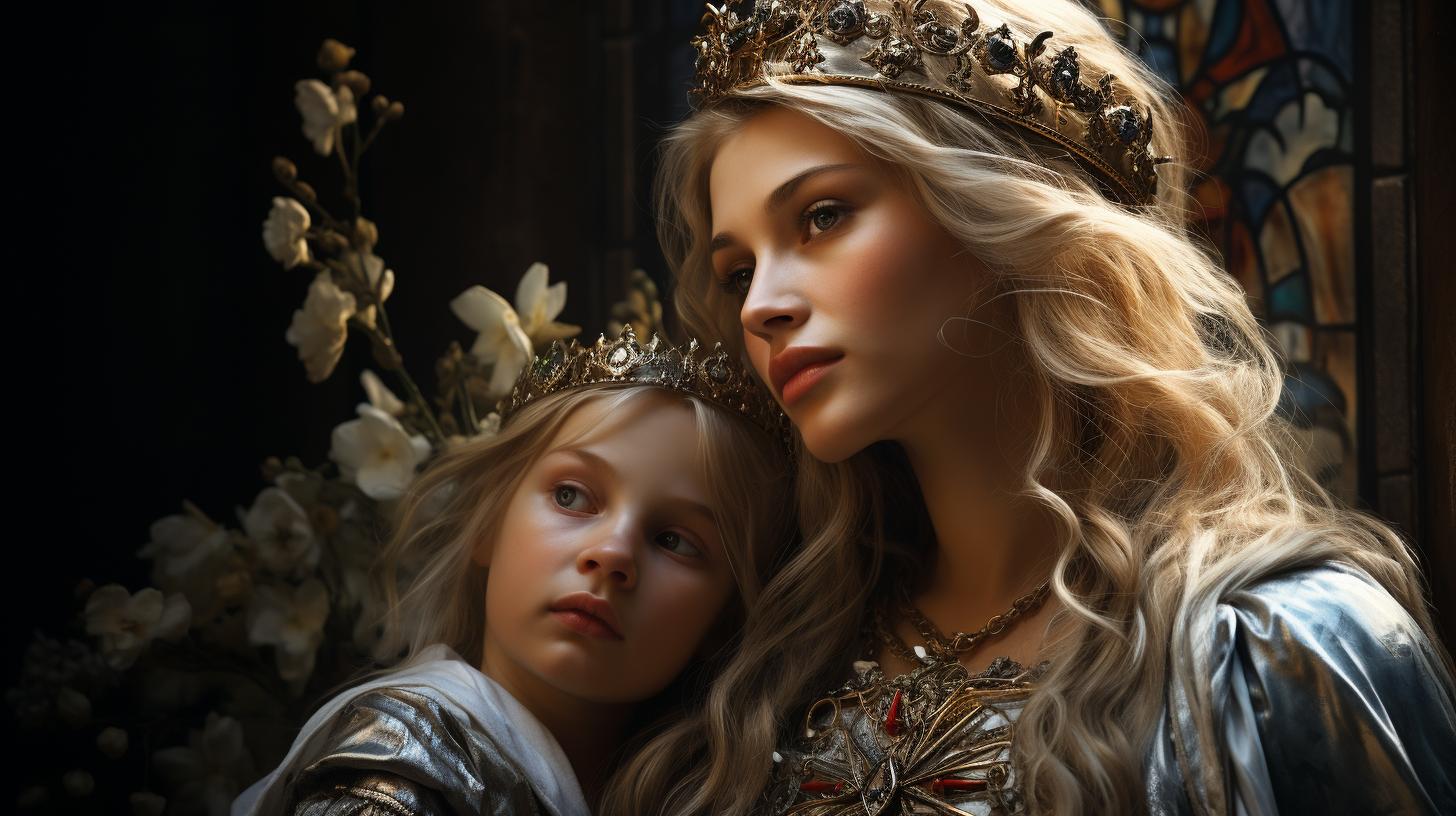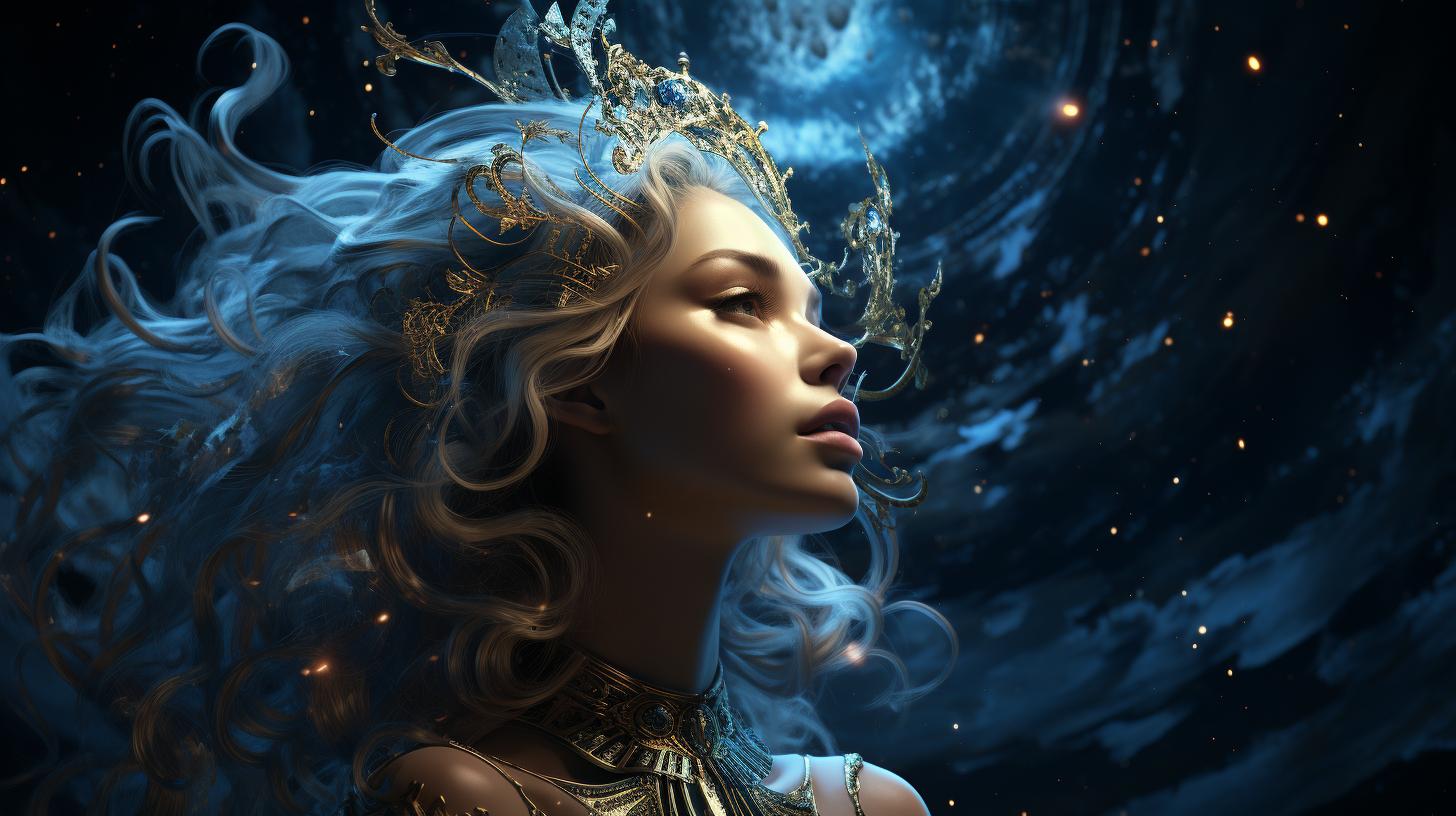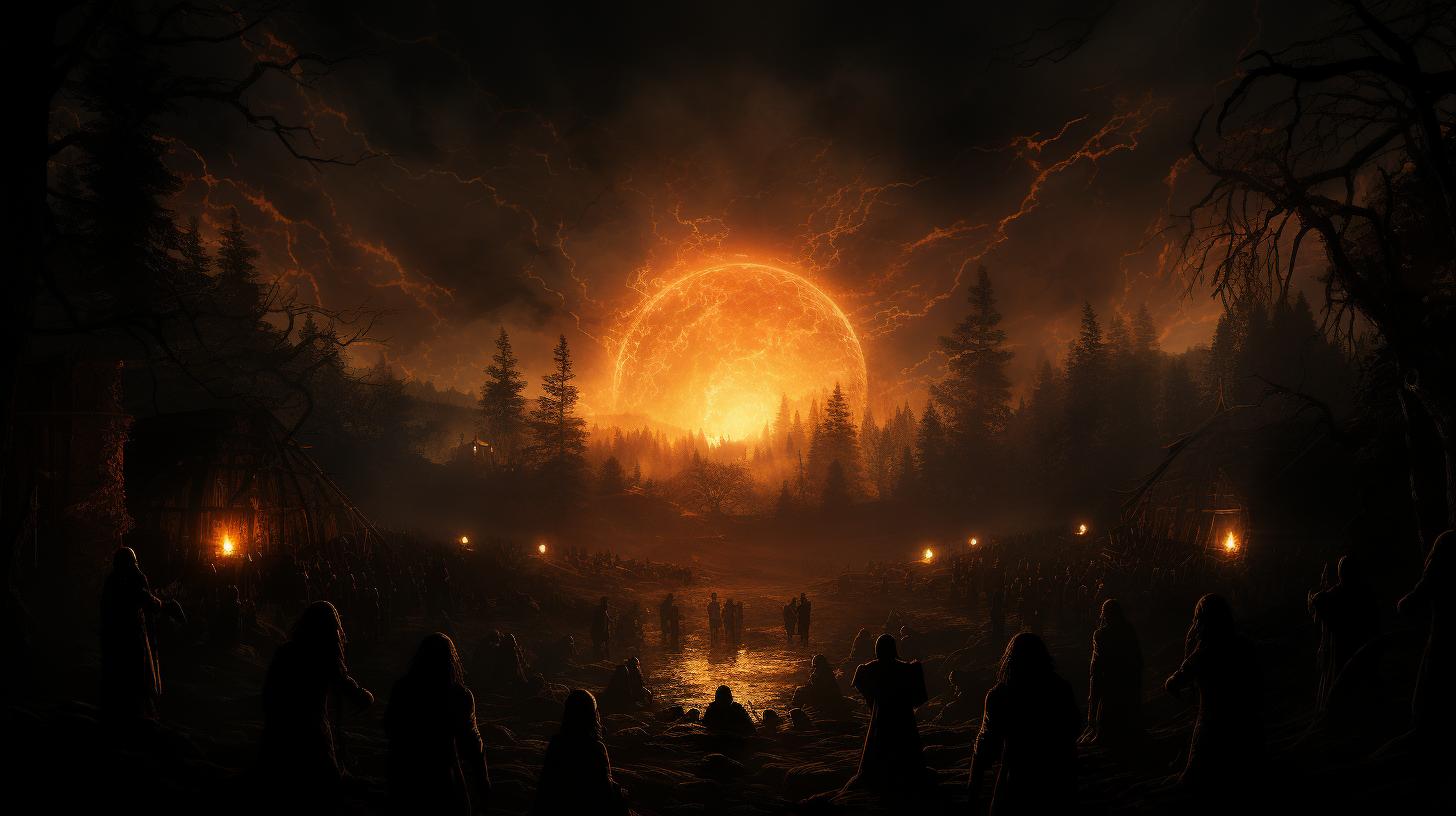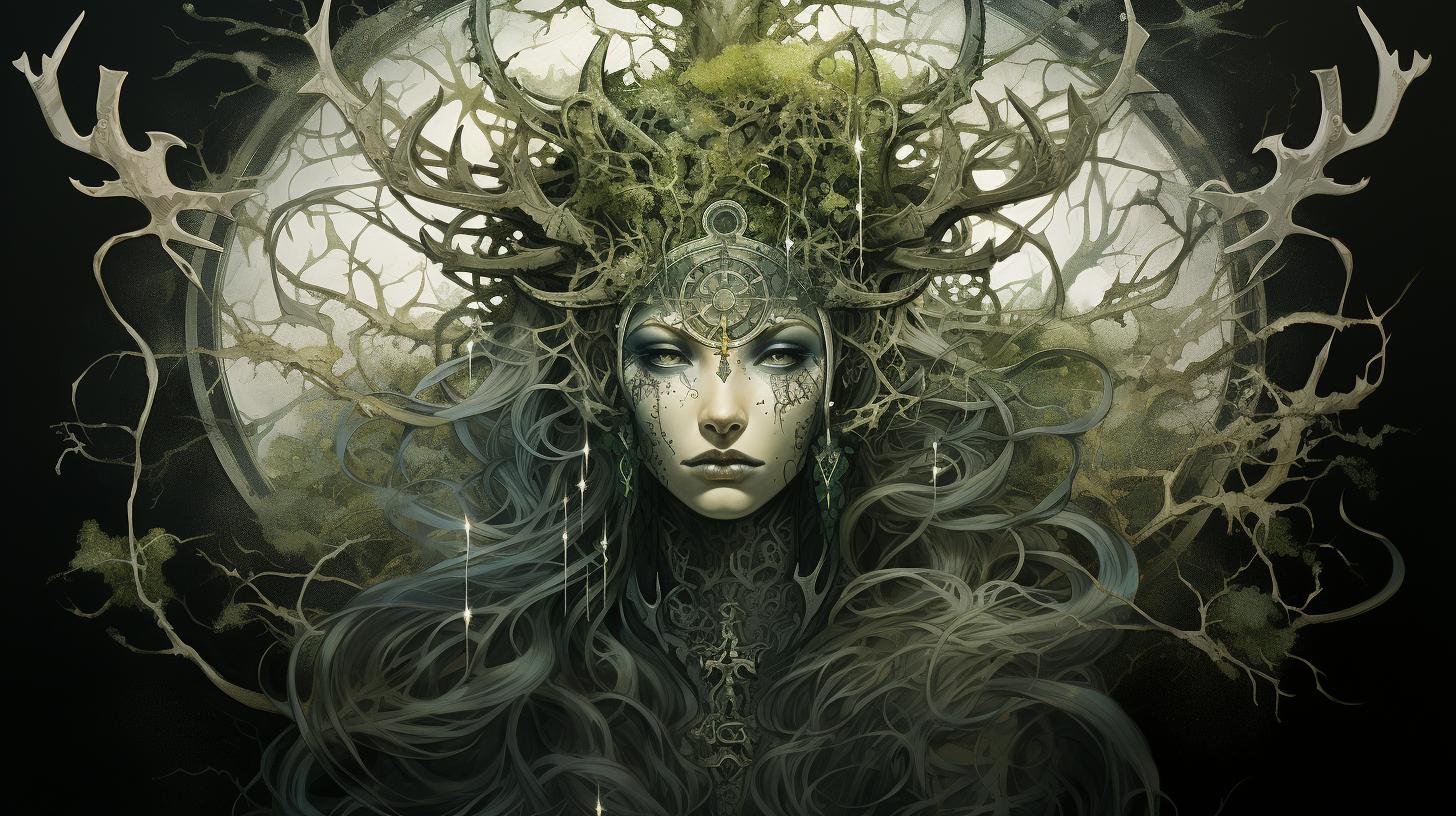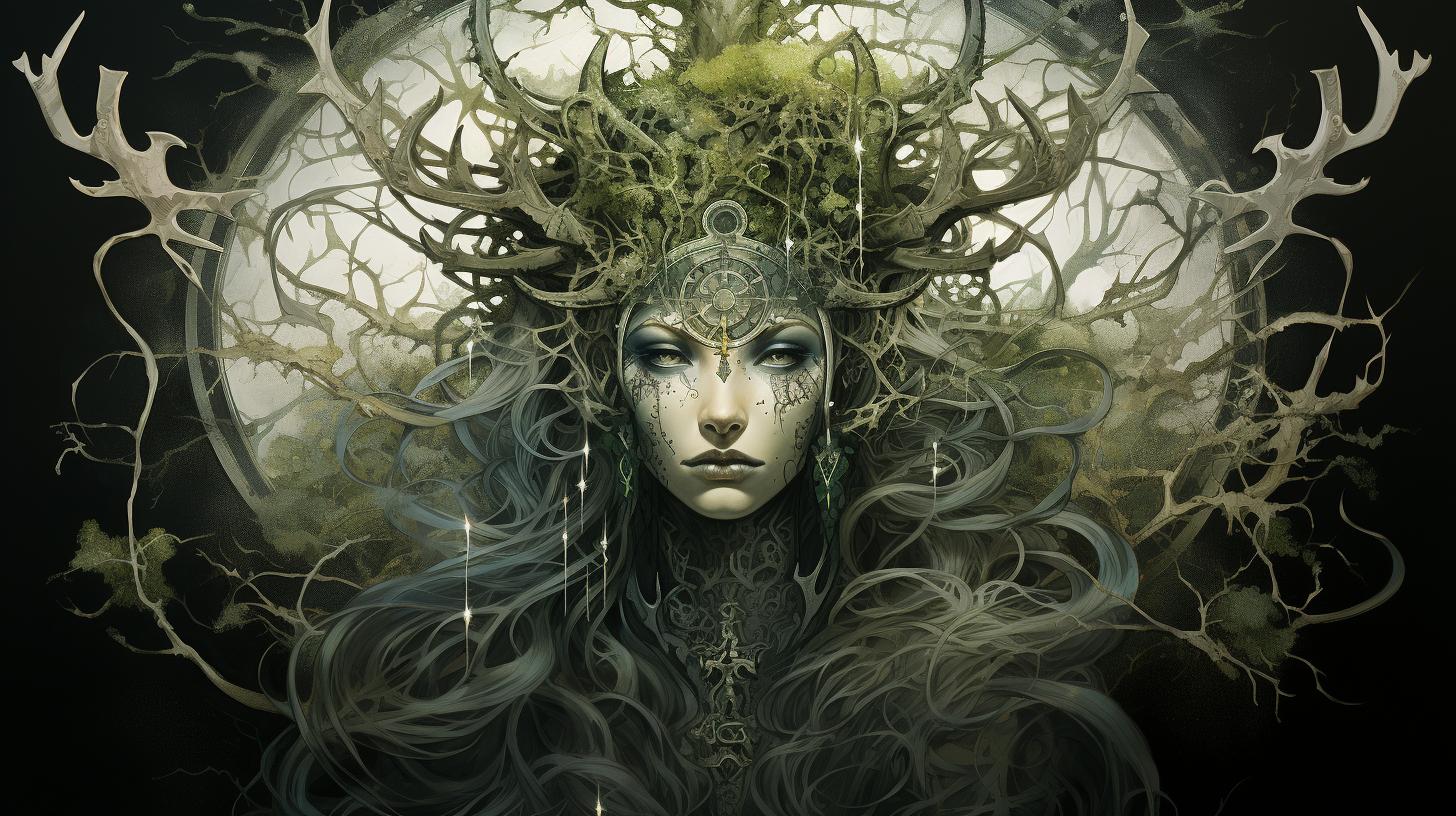Pivotal Insights into the Mysterious Piru Demon: Unveiling the Finnish Mythological Creature
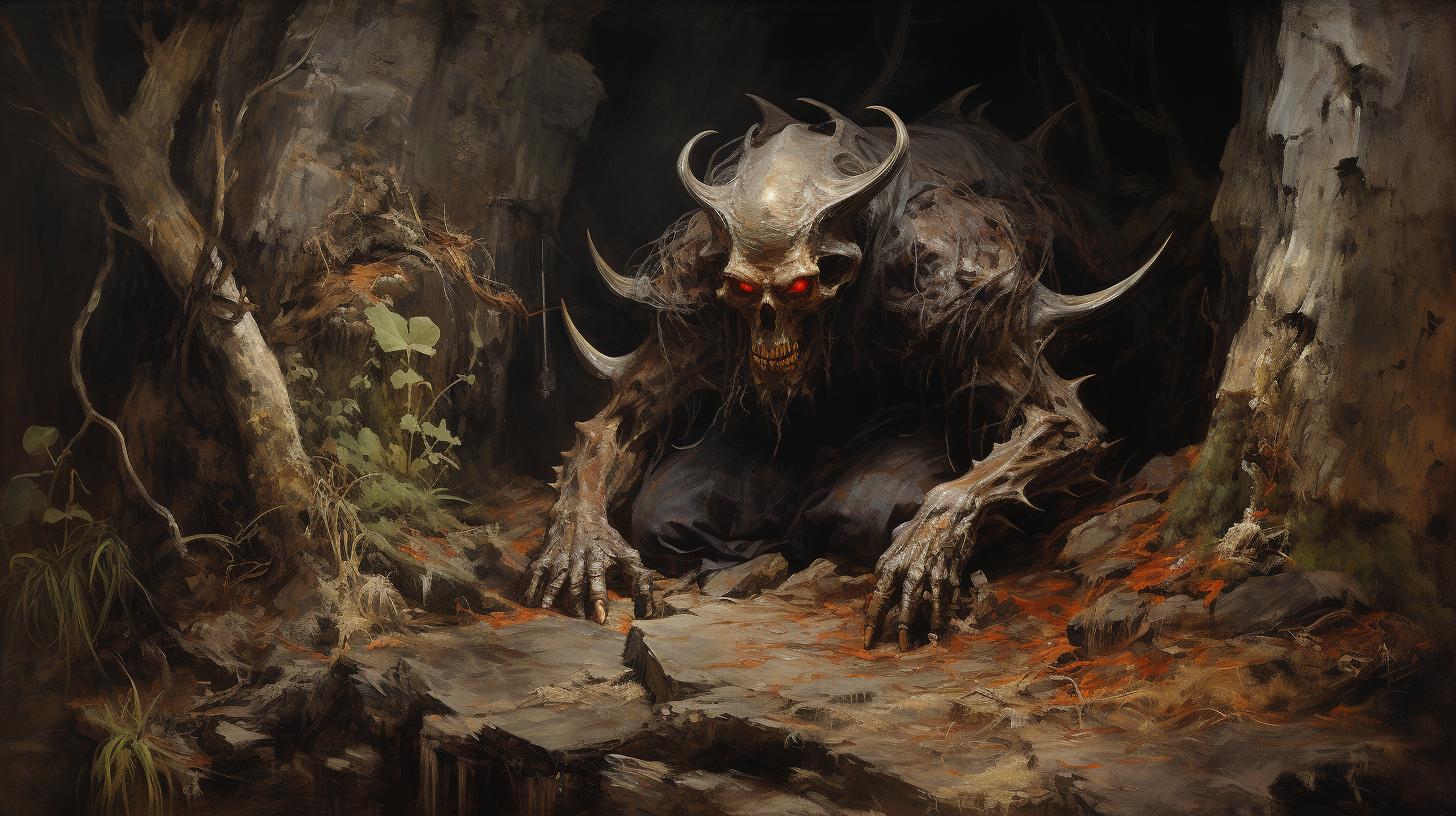
The Piru demon holds a significant place in Finnish mythology, representing a malevolent spirit or demon. It is described as a grotesque creature that resides in the forest, engaging in battles of wit with those clever enough to face it.
Linked to paranormal phenomena like poltergeists, the Piru demon is sometimes referred to as the Devil or the main Piru. One intriguing aspect is the curse associated with this creature, with its offspring born with an animal leg as a result of its vengeful act.
This article delves into the mysteries surrounding the Piru demon, exploring its appearance and legends while examining its role in Finnish culture and beyond.
Exploring Tree Spirits and Folklore
The world of folklore is rich with mystical beings and entities, and tree spirits stand out as captivating and enigmatic creatures. These spirits are deeply rooted in the mythologies of countless cultures, including the intriguing realm of Finnish folklore.
In this first section, we will delve into the captivating realm of tree spirits and their significance in the folklore of various societies.
Defining Tree Spirits
- Tree spirits, also known as wood spirits or arboreal spirits, are supernatural entities associated with trees and forests.
- They are believed to possess wisdom and power over nature, often acting as guardians or protectors of the natural world.
- Tree spirits can take on various forms, ranging from ethereal and friendly beings to ominous and volatile forces.
Tree Spirits in Different Cultures
Tree spirits have been a prominent feature in folklore across the globe.
Let’s explore some examples:
- Celtic Mythology: The Celts believed in tree spirits known as dryads or druids. These spirits were associated with specific types of trees and held deep connections to nature.
- Slavic Folklore: In Slavic culture, leshy and leshenki were tree spirits often depicted as guardians of the forest and its wildlife.
- Native American Traditions: Native American tribes, such as the Iroquois and Cherokee, held a deep reverence for tree spirits, seeing them as vital parts of the natural balance.
Tree Spirits in Finnish Folklore
In Finnish folklore, the presence of tree spirits, including the infamous Piru demon, holds great significance.
These spirits are believed to embody the primal forces of the forest, exerting their influence on the natural world and those who encounter them. The Piru demon, in particular, is known for its malevolent nature, engaging in battles of wit with those who dare to cross its path.
Unearthing Deeper Meanings
These tree spirits and their folklore provide a window into the connection between humanity and nature. They reflect our longstanding fascination with the unknown, the mysterious, and the supernatural.
Exploring the tales and legends surrounding tree spirits can lead us to a deeper understanding of our relationship with the natural world and the enduring power of folklore.
Norse Demons: Connections to Piru Demon
Exploring the fascinating world of Norse mythology unveils intriguing connections between Norse demons and the enigmatic Piru demon of Finnish folklore.
While Norse mythology primarily originated from Scandinavia, its widespread influence reached neighboring regions, including Finland. This cross-cultural exchange contributed to the evolution and intertwining of various mythical creatures and their stories.
Norse mythology presents a captivating tapestry of gods, giants, and demons, among which the Norse demons bear striking resemblances to the Piru demon. For instance, one prevalent Norse demon is known as “Draugr,” described as an undead creature possessing supernatural strength and harboring a vengeful spirit.
Similarly, the Piru demon embodies a malevolent force lurking in the Finnish wilderness, capable of inflicting punishment on those who dare to challenge it.
Furthermore, significant similarities can be observed between the demonic figures known as “Jötunn” in Norse mythology and the Piru demon.
Jötunn, often translated as giants, represent powerful, otherworldly beings with connections to natural elements. Similarly, the Piru demon is depicted as an unpleasant forest dweller associated with mysterious paranormal phenomena like poltergeists.
These interconnected mythical beings can be attributed to historical interactions and cultural exchanges between ancient Finnish and Norse societies. The folklore and legends surrounding these demons reflect shared beliefs and rituals, illuminating the interconnectedness of ancient mythologies in the region.
By delving into the connections between Norse demons and the Piru demon, we gain a deeper understanding of the intertwining threads that shaped the rich tapestry of Northern European folklore. These tales not only captivate the imagination but also offer valuable insight into the cultural heritage passed down through generations, giving us a glimpse into the mysterious and captivating world of mythical creatures.
European Mythical Creatures: Similarities and Differences
European mythology is rich with a wide variety of mythical creatures, each holding its own unique place in folklore. While exploring these enchanting beings, it becomes intriguing to discover the similarities and differences between the Piru demon of Finnish mythology and other creatures found throughout Europe.
One such noteworthy parallel can be drawn between the Piru demon and the Norse demons. Both share a dark and malevolent nature, causing havoc and mischief in their respective mythologies. However, it is important to note that while the Piru demon is specifically associated with Finnish folklore, Norse demons have a broader presence in Scandinavian mythology.
- In terms of physical appearance, the Piru demon is often depicted as a repulsive forest creature, whereas Norse demons may take various forms, sometimes resembling monstrous beings or supernatural entities.
- Both the Piru demon and Norse demons are known for their association with paranormal phenomena.
While the Piru demon is connected to poltergeists, Norse demons are often linked to possession and spiritual disturbances.
- Interestingly, the Piru demon’s cursed offspring with an animal leg bears some resemblance to other European mythical creatures.
For example, the Greek myth of the centaur presents a creature with the body of a horse and the upper body of a human.
- While the Piru demon’s nature and characteristics are deeply rooted in Finnish mythology, it is fascinating to explore the connections and divergences with similar creatures across Europe.
In summary, European mythology showcases a captivating array of mythical creatures, and examining the Piru demon’s similarities and differences with other European beings highlights the unique qualities and folklore associated with this Finnish legend.
Unveiling the Mysterious Nature of Piru Demon
The Piru demon, a malevolent spirit in Finnish mythology, embodies an air of mystery and intrigue. Delving into its enigmatic nature reveals fascinating insights into its appearance, characteristics, legends, and stories.
Appearance and Characteristics
The Piru demon is described as a repulsive creature, dwelling deep within the forest. Its physical features are often portrayed as grotesque, instilling fear in those who dare to face it.
With twisted limbs, sharp claws, and piercing eyes, it exudes an uncanny aura that is both mesmerizing and terrifying.
Furthermore, the Piru demon possesses supernatural powers and cunning intelligence, engaging in battles of wit with those who try to outsmart it.
It is known to strike deals and bargains, tempting individuals with promises of power or wealth. However, crossing paths with the Piru demon always comes with a perilous price, as it demands retribution or metes out punishment in return.
Legends and Stories Surrounding Piru Demon
The Curse and the Animal Encounter
Intriguing tales surround the origins of the Piru demon’s cursed nature. According to Finnish folklore, in his youth, the demon lost a leg and sought revenge by cursing the first animal he encountered.
The unfortunate creature, be it a horse or a goat, unwillingly became the vessel for the Piru demon’s revenge, gifting it a replacement limb. This curse persists through generations, as the demon’s offspring are now born with an animal leg, a distinctive mark of their infernal lineage.
Piru Demon as a Protective Parent
A unique aspect of the Piru demon’s character is its identity as a protective parent. In Finnish tradition, it is believed that the demon serves as a paternal figure and uses its offspring as substitutes for human babies in a practice known as “vaihdokas.”
The Piru demon swiftly comes to the defense of its progeny when threatened, displaying a fierce and formidable presence.
Piru Demon and Paranormal Phenomena
The Piru demon’s connection to paranormal phenomena, such as poltergeists and supernatural disturbances, adds to its mystique. In various accounts, it is implicated in unexplained occurrences, playing a role in the disruption of peace and stability.
Though the specifics of this association remain elusive, it further underscores the demon’s haunting and ethereal nature.
By unraveling the layers of its appearance, characteristics, and engrossing legends, a clearer understanding of the Piru demon’s enigmatic presence in Finnish mythology emerges.
As we venture further into this exploration, we uncover its symbolism, significance in Finnish culture, and its enduring relevance in modern times.
Understanding the Role of Piru Demon in Finnish Mythology
The Piru demon holds significant symbolism and cultural importance in Finnish mythology.
This section delves into its role within Finnish culture throughout history and explores its relevance in modern times.
Significance and Symbolism in Finnish Culture
The Piru demon has deep-rooted significance in Finnish culture, representing the eternal struggle between good and evil. It embodies the fears and mysteries of the wilderness, acting as a cautionary figure for those who dare to venture into the unknown.
Its presence in folklore and mythology reflects the Finns’ connection with nature and their belief in supernatural beings. The tales and legends surrounding the Piru demon have been passed down through generations, serving as a way to preserve cultural heritage and pass on valuable life lessons.
In Finnish symbolism, the Piru demon represents the darker aspects of human nature, highlighting the importance of maintaining balance and harmony. It serves as a reminder to individuals to stay vigilant and wise in navigating life’s challenges, as crossing paths with the Piru demon can result in grave consequences.
Animal Leg Curse: A Symbol of Resilience
One notable aspect of Piru demon lore is its curse of being born with an animal leg. This symbolizes resilience and adaptation, as the demon’s offspring must learn to navigate the world with a physical mark of their cursed lineage.
It emphasizes the ability to overcome adversity and take pride in one’s unique attributes, even in the face of societal judgment.
Relevance of Piru Demon in Modern Times
While the influence of traditional mythology may have diminished in modern society, the Piru demon still holds a place in Finnish cultural identity. It continues to inspire contemporary artists, writers, and filmmakers, who explore its rich folklore and reimagine its tales for a new generation.
The themes of bravery, wit, and the struggle against malevolence resonate with audiences, reminding them of the timeless lessons embedded in Finnish mythology.
Beyond the realm of folklore, the Piru demon’s legacy can be seen in modern Finnish society.
It serves as a reminder to respect and preserve the natural world, fostering a deep appreciation for forests and the creatures that inhabit them. Additionally, the Piru demon’s association with paranormal phenomena like poltergeists fuels intrigue and curiosity, making it a subject of fascination for those interested in the supernatural.
In conclusion, the Piru demon’s role in Finnish mythology encompasses its significance in cultural traditions and its enduring relevance in modern times. It remains a powerful symbol, representing the delicate balance between good and evil, and serving as a cautionary reminder of the consequences that may befall those who underestimate the forces of darkness.
.











